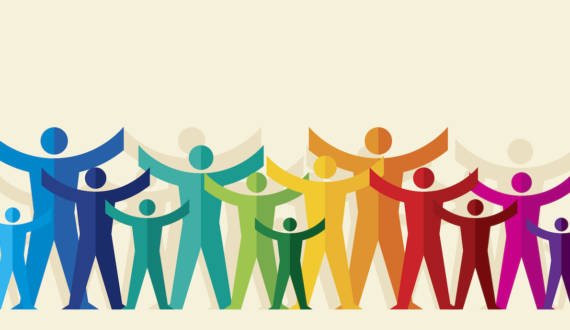Discrimination – Don’t Let It Block Access to Care
The Social Determinants of Health include five separate pillars; the first is Social and Community Context. Within Social and Community Context is discrimination. A key element when discussing social and community context, inequities in health, and the very nature of the Social Determinants of Health. Generally, discrimination is differential behavior toward an individual or a group because of arbitrary characteristics such as age, gender, or race.
As you read this article, remember what Barack Obama said, “Change will not come if we wait for some other person or some other time. We are the ones we’ve been waiting for. We are the change that we seek.” Before that, Martin Luther King Jr. said, “Injustice anywhere is a threat to justice everywhere.”
Discrimination Defined
As stated above, discrimination is a behavior, and there are both objective and subjective forms. When a person is discriminated against due to an arbitrary characteristic and is aware of being discriminated against, objective and subjective discrimination have occurred. Racial discrimination is multifaceted, encompassing (biological, social, and psychological factors.
We define perceived discrimination as an individual’s perception of being unfairly treated due to some personal attribute. Perceived discrimination manifests as chronic, routine, and relatively minor experiences of unfair treatment,
The definition of health care discrimination includes differences in care that result from biases, prejudices, stereotyping, and uncertainty in clinical communication and decision making. The opposite of healthcare discrimination is medical mistrust, which tends to distrust medical systems and personnel believed to represent the dominant culture in society.
The definition of structural racism includes the systematic exclusion of non-whites racial groups from resources and mobility in society as a means to maintain power.
Given the variety of definitions of discrimination, it is not surprising that over 1/3 of U.S. adults report at least one major discriminatory event, and over 3/5’s report everyday discrimination. These definitions are the basis of the health disparities that this paper addresses. From physical health to behavioral health to other forms of disparities will form our understanding of the inclusion in the definition of Social Determinants of Health.
Health Disparity Explained
Health disparity has existed throughout our history. Americans have always experienced barriers to care based on race, ethnicity, socioeconomic status, age, sex, disability status, sexual orientation, gender identity, and residential location. The health disparities we will discuss will involve one or more of these barriers. Health disparities result in obesity, diabetes, hypertension, heart disease, birth outcomes, and mental health problems. With a demographic trend towards an increasingly complex racial and ethnic landscape in America, it will overcome all of us if we don’t address the problem.
Statistics:
In understanding the breadth of the discrimination challenge, it is helpful to understand the statistics that underlie the problem.
For example, in a recent national poll, 74% of African Americans, 69% of other non-Whites, and 30% of Whites report that they have personally experienced general race-based discrimination.
When discussing discrimination studies for the last 150 years, the most descriptive is that African Americans have higher rates of death, disease, and disability than whites. Another national survey found that 57% of African Americans indicated that discrimination occurred “often” or “very” often in interactions with White physicians. The statistics are supported when looking at particular diagnoses. In 2017 African Americans had an HIV death rate of 6.6 per 100,000 population compared with 0.9 per 100,000.
The National Health Disparities Report looked at discrimination more broadly. The report found that White patients received better quality care than 53% of Hispanics, 43% of African Americans, 38% of American India/Alaska Native, and 22% of Asian and Pacific Islander patients.
Discrimination also exists in other communities. For instance, almost one-third of LGBT adolescents reported discrimination based on sexual orientation compared to just 4% of heterosexual adolescents. Further, 55.2% of LGBT adults indicated that the discrimination had interfered with have a full and productive life compared to 20.5% of heterosexuals. Finally, of the LGBT persons who experienced discrimination, 25.% reported self-harm compared to 6.3% of non-LGBT persons, 23% reported suicidal ideation compared to 7.4%, and had significantly higher depression scores.
While the statistics show the existence of discrimination, it is not the whole story. Historically medical research has exhibited blatant discrimination or racial bias that has changed. There is a tendency to define race as a biological difference and attribute research results to that inherent difference. The alternative that is also prevalent is to fail to include people of color in the research at a percentage that mirrors society as a whole.
Health Implications
When comparing African Americans to White populations, six leading causes of preventable mortality were higher for African Americans: cancer, cardiovascular disease, diabetes, infant mortality, chemical dependency, and homicide/unintentional injury. African Americans are at a greater risk for cardiovascular diseases, coronary heart disease, and stroke
Studies have found that African Americans have documented higher blood pressure than non-Hispanic White adults, a risk factor for many illnesses. Illnesses include heart disease, stroke, and end-stage renal disease. The documented high blood pressure persists into old age. Factors that contribute to higher blood pressure include socioeconomic status, obesity, and negative health behaviors.
Diabetes is another chronic disease that has associated racial disparities. African Americans have lower HbA1c testing, foot exams, and blood pressure testing. In addition, when individuals perceive racial/ethnic discrimination by their providers, their probability of diabetes management drops in half. Managing diabetes is critical to maintaining health.
Pain management also has inherent racial disparity. African Americans reported significantly worse pain management scores compared to White Americans. Poor pain management can have negative effects on quality of life. Not surprising when looking at the health disparities, but racial discrimination is associated with low medication adherence, tempered by distrust in physicians.
Medical testing also is impacted by health disparity. African American women are less likely than White American women to receive testing for osteoporosis, and if found, African American women are less likely to receive treatment. Physicians are more likely to delay treatment of African Americans suspected of having prostate cancer than for White Americans. High levels of self-reported racial discrimination were related to pre-term and low birthweight babies.
People living with a disability also are impacted by health disparities. While we recognize race and ethnicity as inequities in the healthcare system, there is no such recognition for people living with a disability. While youth with disabilities often receive the needed healthcare, health systems are not prepared to provide adequate healthcare for complex needs as they transition to adulthood.
Discrimination causes human stress. Individuals who encounter more stress are more likely to develop illness and have worse outcomes. Increased stress causes elevated blood pressure, heart rate, and cortisol secretions. Perceived discrimination may reduce self-control, which may increase participation in unhealthy behaviors or decreasing participation in health behaviors.
Discrimination often causes a delay in treatment resulting from a delay in medical tests and delays in filling prescriptions. Prescriptions filling delays affect medication adherence, but who can take an unfilled medication. The doctor’s actions or lack of action result in an unwillingness to access preventative testing, such as cholesterol testing, A1c, diabetic foot and eye examinations, and flu shots.
If we want to understand the disparities in healthcare, we only need to look at the myriad of studies over the last 20 years. These studies have demonstrated that African American adults and children are less likely to receive appropriate testing or cutting-edge medical procedures than White Americans.
Behavioral Health Implications
A Latina feminist mental health activist said she felt alone. When she saw mental health discussed or shown through the media, she never really saw people of color, which explained her sense of aloneness. Based on studies, she was not far from wrong.
Perceived discrimination is positively associated with three indices of mental health. For people reporting a lifetime discriminatory event, the odds increased dramatically for having a psychiatric disorder. African Americans carry a more significant disability burden due to schizophrenia. The burden includes multimorbidity, including alcohol use disorder and marijuana use disorder. African Americans with schizophrenia report numerous social disadvantages, especially discrimination, but religious service attendance is important.
Recent studies have found that African Americans have twice the chance of developing psychotic symptoms (PS) and psychotic experiences (PE). Repeated exposure to social adversity links PS/PE to the development of symptoms. It possibly links to delusional symptoms through increased rejection, threat anticipation, and anxiety.
Historical trauma, defined as unfair treatment, shows a higher prevalence of mental health problems. In a study of reservation-dwelling Native Americans, those with a greater sense of loss had greater odds of depression and PTSD symptoms. The study confirms the trauma created by the history of land loss and cultural changes in the Native American community.
Everyday discrimination causes social stressors linked to detrimental cognitive functioning. And a faster decline in episodic memory. In addition, the long-term effect of discrimination also includes decreasing processing speed and executive functioning. In short, the aging process is advanced due to discrimination.
African Americans also face discrimination in treatment for substance abuse. Discrimination includes access to care and the success of treatment. Which in turn reduces their willingness to seek care.
Over 100 studies have supported the relationship between discrimination and mental health. The related issues include depression, anxiety, self-esteem, posttraumatic stress symptoms, and indicators of psychosis or paranoia. The reality of discrimination impacts health across a continuum of physical and mental health problems, which is the true measure of health inequity. Discrimination is widespread in the United States from African Americans suffer from racist name-calling, higher charges for goods and services, housing and salary discrimination, and physical attacks.
Other Forces on Health Equity
Individual and institutional discrimination has persisted in the United States, notwithstanding legislation and policies designed to fight it. Discrimination will continue to persist in the absence of change.
African American families in the U.S. have about one-twentieth of the wealth of White families. African Americans are not unwilling to work, but they cannot overcome unfair policies and practices that favor the wealthy. Residential segregation severely restricts employment opportunities that further the wealth divide. While the location of housing may enhance social cohesion and community participation, it impacts access to fairness.
To further underscore the problem, we need to understand the responsibility of the medical profession. After treating both White and African American patients, physicians surveyed described the African Americans as more likely to abuse drugs, less likely to comply with medical recommendations, less intelligent, and less educated.
Several issues arise when looking at medical bias. Clinical bias includes negative feelings about individuals and groups because of a group membership. Personal bias is where an individual clinician has subtly discriminatory behavior. The behavior will persist unless the profession has the motivation to control prejudice to provide equal care that is color blind.
We need to address discrimination in housing, education, employment before we can fully address health inequity.
Study Methods
Many different assessment documents support the finding of discrimination. In one such assessment, an affirmative answer to the question “Thinking about all of the experiences you have had with health care visits in the last two years, have you ever felt that the doctor or medical staff you saw judged you unfairly or treated you with disrespect because of your (race or ethnic group/gender/ability to pay)?”
Another study included several questions:
Discrimination, a measure of major experiences of unfair treatment, is a count of three items:
“1. ‘Do you think you have ever been unfairly fired or denied promotion?’
2. ‘For unfair reasons, do you think you have ever not been hired for a job?’
3. ‘Do you think you have ever been unfairly stopped, searched, questioned, physically threatened or abused by the police?’”
Another assessment looked to identify various locations where discrimination may have occurred. ““Have you ever experienced discrimination, were prevented from doing something, hassled or made to feel inferior in any of the following situations because of your race or color?” For the present study, we repeated this question for 7 settings: (1) at school, (2) getting a job, (3) getting housing, (4) at work, (5) at home, (6) seeking medical care, and (7) in public.”
The following assessment looks specifically at healthcare. “The first was, ‘‘Generally speaking, how often do you think our health care system treats people unfairly based on what their race or ethnic background is? Does this happen very often, moderately often, somewhat often, not too often or never?’’
The final assessment is another example of a health-specific assessment. “Within the past 12 months when seeking healthcare, do you feel your experiences were worse than, the same as, or better than for people of other races?” The responses ranged from “Better than other races”, “the same as other races”, “worse than some races”, “better than others”, “No healthcare in the past 12 months”, and “only encountered people of the same race”.
Structural racism considers four domains: political participation, employment and job status, educational attainment, and judicial treatment. These domains provide an easy-to-follow roadmap to address discrimination and move forward fairly and equitably.
What Can We Do?
Reducing health disparities by attacking discrimination cannot be an impossible dream. One study identified steps to follow: establish ongoing procedures to monitor and continuously assess equity in care, improve organization racial climate, ensure racial diversity at all levels of the organization, mandate effective training programs and hold staff accountable, carefully implement quality improvement, and partner with Grant Agencies and researchers to test creative and innovative strategies.
Literature supports providing social supports, teaching active coping styles, and group identification can lessen the inequity. Physical activity may also reduce the feelings of discrimination and inequity. To address the health inequity suffered by the LBGT community, early implementation of school-based programs may lessen the effect of discrimination.
We need to establish a national data resource that tracks the receipt of discriminatory care. The establishment of the database should include a system of accountability to support positive change. Finally, Medicaid, Medicare, and private insurance can follow the lead of Blue Cross Blue Shield of Massachusetts that established equity measures in all contracts and provider payment programs.
Final Words:
The issues in this article reflect the past remember that we are the change going forward. We must understand our history but should leave it in the past and commit to a tomorrow that is the change we need to seek.



